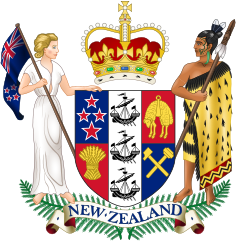| Trade in Endangered Species Act | |
|---|---|
 | |
| New Zealand Parliament | |
| |
| Legislative history | |
| Passed | 1989 |
| Related legislation | |
| Wildlife Act 1953 | |
| Status: Current legislation | |
The Trade in Endangered Species Act is an Act of Parliament that was passed in New Zealand in 1989. It is administered by the Department of Conservation.

